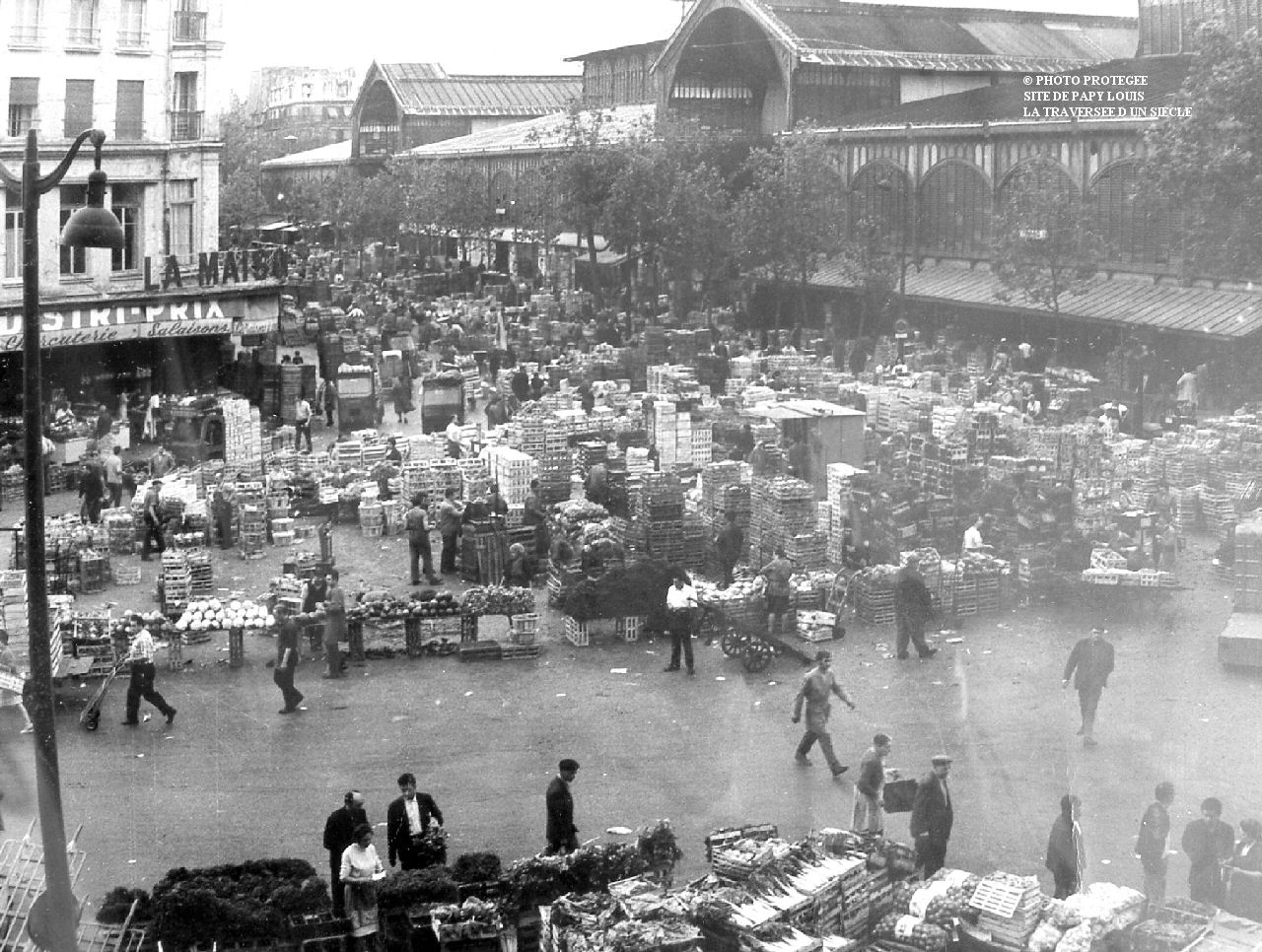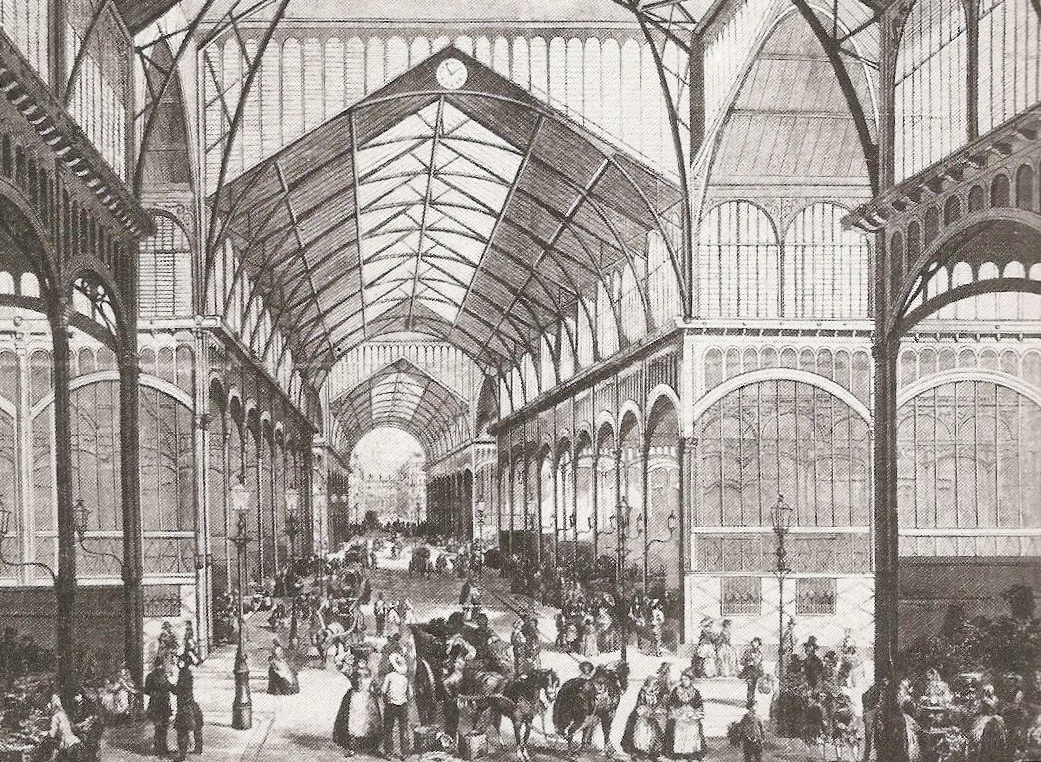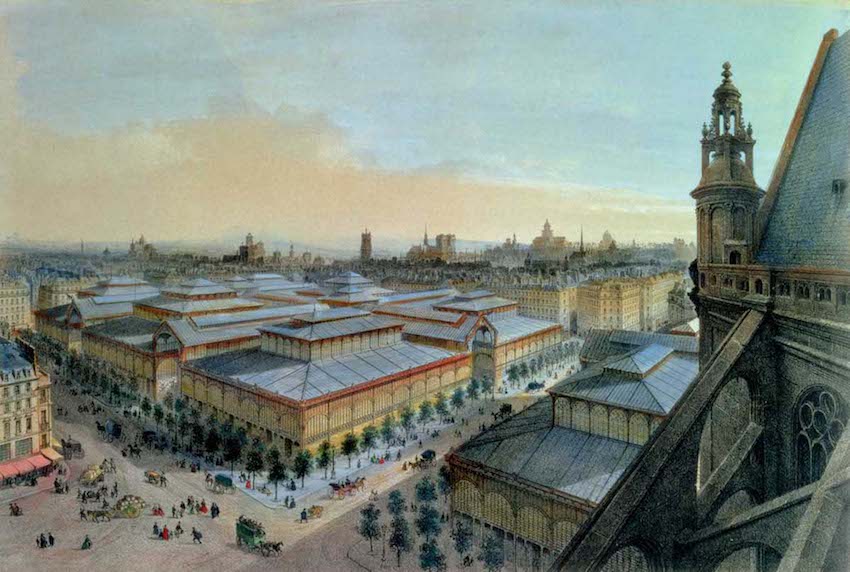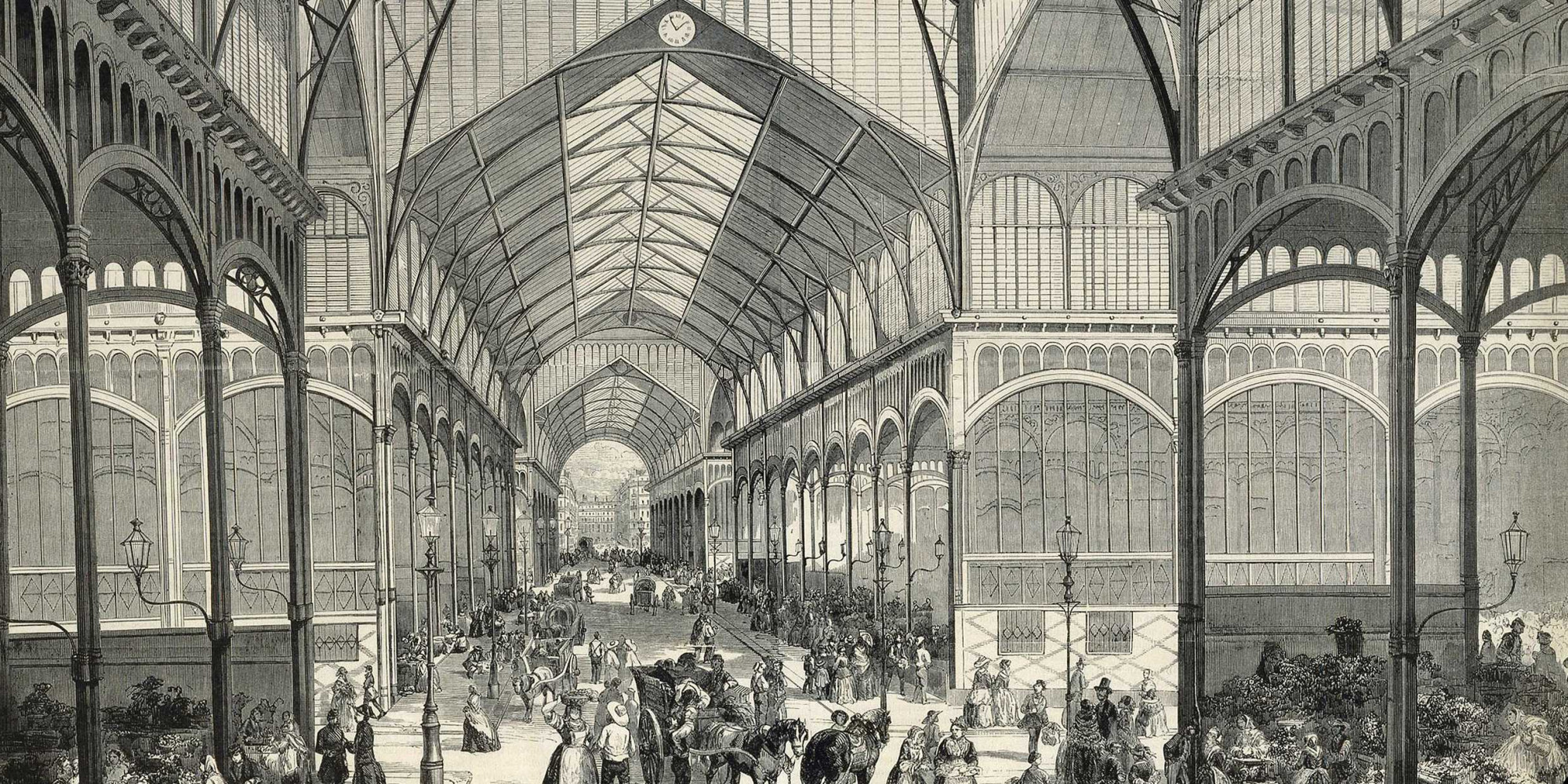
Monuments et architecture Les Halles de style Baltard Jonzac
Les Halles, which means what it sounds like, was one of the true wonders of working class Paris. Made famous by Emile Zola's famous novel of the same name, it was nicknamed " the stomach " of Paris for obvious reasons, as well as the scale of it's labyrinthine underground alleys selling fish, meat and vegetables.

1852 Les Halles de Baltard Paris Unplugged
Les Halles de Baltard ne sont plus guère appréciées. Du reste, lorsqu'il est envisagé, à partir de 1959, de déménager ces halles à Rungis, les historiens et amoureux du patrimoine se.

Le Paris d'autrefois vu par Patrick PARIS 1er ARRONDISSEMENT Des Halles à la rue
Les Halles de Baltard were highly controversial at the time of their construction, but eventually became one of the iconic buildings of Paris. Sadly, they eventually become obsolete. They were pulled down in the 1970s and the market transferred to Rungis in the southern outskirts of Paris.

Les Halles Centrales, nouvelles Halles de Baltard, 1er arrondissement, Paris. Paris Musées
Baltard Pavilion. In the town of Nogent-sur-Marne stand the last remains of the Grandes Halles de Paris, Paris's great covered market known as Les Halles and built during the Second Empire. Only as a result of the town's obstinacy was this pavilion the only one to escape demolition in 1970. The Baltard Pavilion (Pavilion number 8) for egg and.

paradis express Les Halles, Paris
The resulting wrought-iron and glass pavilions of Les Halles, designed by the city architect Victor Baltard, were tragically bulldozed in the 1970s and replaced with a grim underground shopping.

19TH CENTURY, Engineering Architecture, France Victor Baltard (18051874) Les Halles
Les Halles ( French pronunciation: [le al]; 'The Halls') was Paris ' central fresh food market. It last operated on 12 January 1973 [1] and was replaced by an underground shopping centre and a park.

A Paris Guide Les Halles
Les Halles boasts a mix of tiny boutiques and huge department stores. Start your day by admiring the stunning Gothic architecture of the Church of St. Eustache before heading to the contemporary artworks of the Pinault Collection. For those looking to indulge in some retail therapy, Forum Les Halles is a must-visit with its impressive.

Halles Baltard Paris Art Nouveau — The Join Us in France Travel Cast Iron Architecture
In 1971, the Baltard Pavilions met the wrecking ball, and in their place Forum Les Halles emerged. Or rather, was submerged, as the new structure became one of the largest underground shopping malls in Europe. When completed in 1979, Forum Les Halles and the adjoining Chatelet-Les Halles train station became known as the hole in the middle of.

Les Halles de Baltard, Paris Ier arr.
Callet, Félix (1792-1854). Les Halles centrales de Paris, construites sous le règne de Napoléon III, par V. Baltard et F. Callet,…. 1862 Vigneau, Jules. Les Halles centrales de Paris autrefois et aujourd'hui. Historique, organisation et fonctionnement, facteurs et mandataires, par M. Jules Vigneau,…. 1903 Aucun champ trouvé.

Les halles de Baltard avant démolition
English: Les Halles, Paris, by Victor Baltard, 1852-1855 Date Unknown date Unknown date https://www2.oberlin.edu/images/Art270/Art270.html Unknown author Unknown author Licensing[edit] This is a faithful photographic reproduction of a two-dimensional, public domain work of art.

Les Halles à travers le temps Le ventre de paris, Châtelet les halles, Vieux paris
Les Halles de Paris était le nom donné aux halles centrales, marché de vente en gros de produits alimentaires frais, situé au cœur de Paris, dans le 1er arrondissement, et qui donna son nom au quartier environnant. Au plus fort de son activité et par manque de place, les étals des marchands s'installaient même dans les rues adjacentes.

Les Halles de Baltard, Paris Ier arr.
The boldness of the Halles's design and its centrality to the reconstruction of Paris should have guaranteed Baltard a prominent place in the history of modernism, a place that might even have surpassed the one now occupied by his slightly older contemporary Henri Labrouste (1801-1875).

Les Halles de Baltard Paris Musées
Writer Emile Zola called Les Halles "the belly of Paris"; the reason is that Les Halles de Baltard literally fed Paris and the Parisians for centuries (hence the nickname "belly of Paris"). In 1969, Les Halles de Baltard were closed and the buildings destroyed.

Les Halles de Baltard avant destruction Paris 1971
In 1870, 12 arching glass and iron pavilions designed by architect Victor Baltard were erected to encapsulate the market — Les Halles. The teeming arcades provided a central location for.

Les Halles Baltard Passerelles
Baltard's Halles were under threat the minute the central market emigrated to the suburb of Rungis. And the threat materialized in 1968 when the city of Paris announced that it would build a.

leshallesdebaltardparis Dondon Media 1 Bons Plans et Actus du Japon 🇯🇵
Les Halles, one of the splendid Second Empire projects, was designed by Victor Baltard and employed the most advanced construction technology of the time, iron and glass. "The belly of Paris, " as the market was called by Emile Zola, was one of the symbols of the city's modernity.